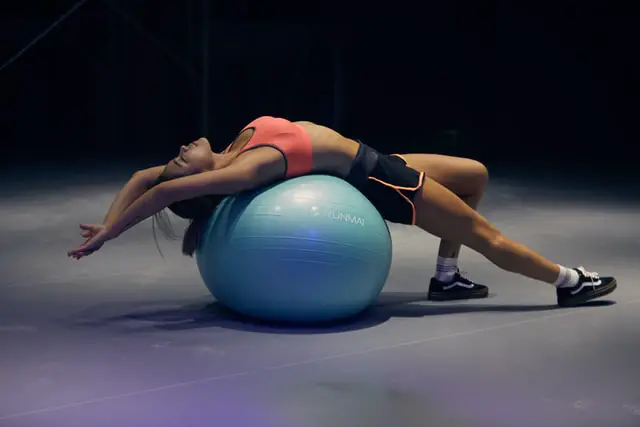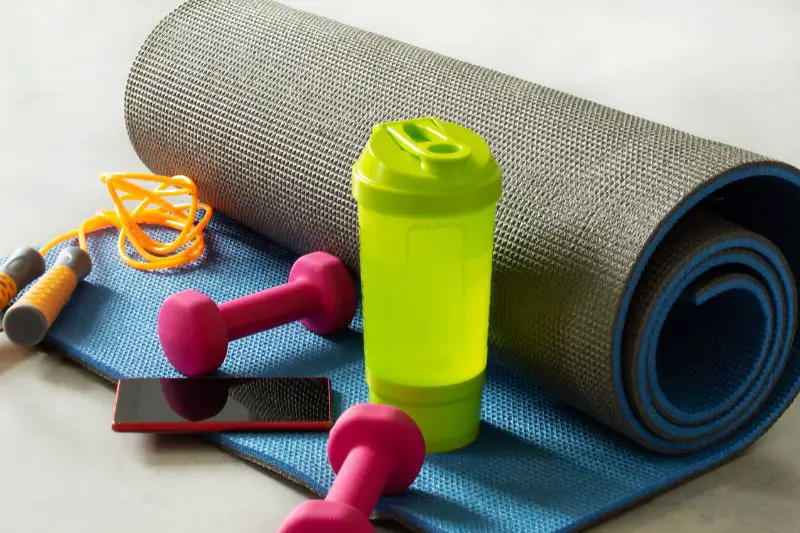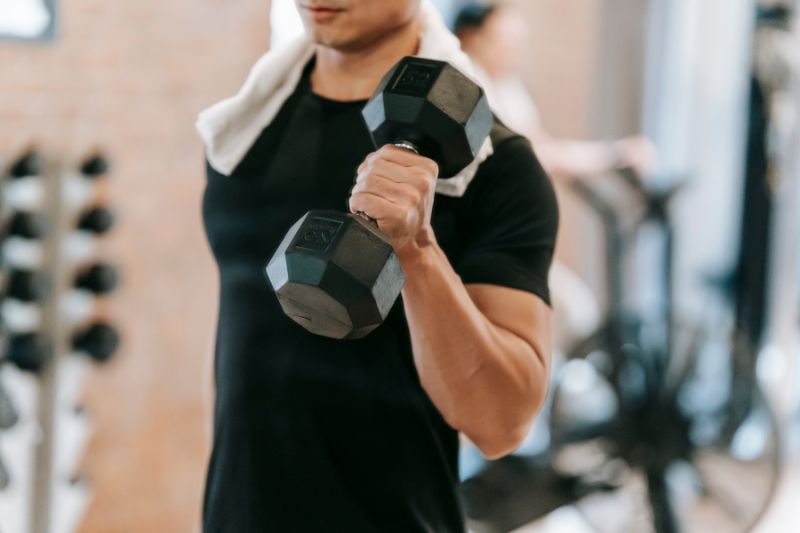
Who really buys fitness products—and why? If you think it’s just bodybuilders and athletes, you might be missing out on a huge market. From busy professionals trying to squeeze in a quick workout to seniors focused on staying active, the demand for fitness products is more diverse than ever.
Understanding your target market isn’t just about selling more—it’s about connecting with the right audience, crafting the right message, and offering solutions that truly meet their needs. In this article, we’ll break down the key demographics, motivations, and marketing strategies that will help you reach your ideal fitness customers. Whether you’re selling gym equipment, supplements, or athleisure wear, identifying your audience is the first step to success. Let’s dive in!
Understanding the Fitness Market Landscape

The fitness industry has seen explosive growth over the past decade, driven by a heightened awareness of health and wellness. Consumers are investing in fitness products more than ever, but not all buyers have the same needs or motivations. To effectively market your products, you must first understand the broader fitness landscape.
Market Growth and Trends
The global fitness industry is booming. According to market research, the fitness and health club market is expected to reach over $96 billion by 2024. Beyond traditional gyms, digital fitness solutions, wearable technology, and home workout equipment are driving sales. Key trends include:
- The rise of home workouts – With the convenience of on-demand fitness apps and smart gym equipment, more consumers prefer working out at home.
- Wearable fitness technology – Smartwatches, heart rate monitors, and fitness trackers are influencing how people monitor their health.
- Sustainable and eco-friendly products – Consumers are increasingly looking for ethically sourced materials and environmentally friendly options.
- Personalized fitness solutions – AI-driven coaching, meal plans, and tailored supplements are in high demand.
Who Is Buying Fitness Products?
Understanding the target audience requires looking at key consumer behaviors. Fitness product buyers typically fall into these categories:
- Casual fitness enthusiasts – Individuals looking for general wellness, often purchasing yoga mats, resistance bands, and smartwatches.
- Serious athletes – Those training for competitions who invest in specialized gear, supplements, and performance-tracking technology.
- Weight loss-focused consumers – Buyers motivated by body transformation, often interested in meal replacements, fitness programs, and fat-burning supplements.
- Rehabilitation and recovery users – People recovering from injuries or managing chronic conditions who purchase foam rollers, massage guns, and physiotherapy bands.
Each of these groups has different needs and spending habits, shaping how fitness brands should position their products.
Why Consumer Insights Matter
Without a deep understanding of consumer behavior, marketing strategies can fall flat. Successful brands use data-driven insights to refine their messaging and target the right audiences. By analyzing purchasing patterns, social media engagement, and market trends, businesses can create highly targeted campaigns that convert interest into sales.
Key Demographics of Fitness Product Consumers

To effectively market fitness products, businesses must understand who their ideal customers are. While fitness is a universal interest, different age groups, genders, and income levels have unique needs and purchasing behaviors. By identifying these demographic segments, brands can tailor their messaging, product offerings, and marketing strategies for maximum impact.
Age Groups
Age plays a significant role in shaping consumer preferences for fitness products. Each generation has distinct motivations, routines, and purchasing habits.
Young Adults (18-30)
This group is highly engaged in fitness trends, often influenced by social media and digital platforms. Many young adults prioritize aesthetics and performance, making them key consumers of:
- Gym memberships and boutique fitness classes
- Smartwatches and fitness trackers
- High-performance activewear and supplements
- Bodyweight and strength-training equipment
They are also early adopters of new fitness technologies, making digital marketing and influencer partnerships particularly effective.
Middle-Aged Adults (30-50)
Balancing work, family, and health is a top priority for this demographic. They are more likely to invest in:
- Home fitness equipment for convenience
- Recovery and wellness products such as massage guns and foam rollers
- Wearable technology to track fitness progress
- Nutrition and weight management solutions
This group responds well to marketing that emphasizes long-term health benefits, stress relief, and work-life balance.
Seniors (50+)
Older adults focus on maintaining mobility, preventing health issues, and staying active. Their purchasing habits lean toward:
- Low-impact exercise equipment such as resistance bands and elliptical machines
- Joint-supporting gear like orthopedic shoes and compression sleeves
- Online fitness programs tailored to senior wellness
- Supplements for bone and muscle health
Marketing to this audience should highlight safety, ease of use, and long-term health benefits.
Gender Preferences
While fitness is universal, men and women often have different priorities when selecting fitness products.
Men
Men are more likely to focus on strength training, muscle growth, and endurance. Popular products include:
- Heavyweights, dumbbells, and resistance training equipment
- Protein powders and muscle-building supplements
- High-performance athletic wear
- Fitness tracking devices for performance analytics
Women
Women tend to prioritize holistic wellness, flexibility, and weight management. They are major consumers of:
- Yoga mats, Pilates gear, and dance-based workout accessories
- Stylish and functional athleisure wear
- Meal replacement shakes and wellness-focused supplements
- Wearable fitness devices with integrated health tracking features
Marketing strategies should be tailored accordingly, ensuring product positioning aligns with the priorities of each gender.
Income Levels and Spending Habits
The fitness market is diverse, and consumers have varying budgets. Understanding these segments helps brands create pricing strategies that appeal to different income groups.
Budget-Conscious Consumers
These buyers prioritize affordability and value, often choosing:
- Basic fitness gear such as resistance bands and jump ropes
- Free or low-cost fitness apps and online workouts
- Budget-friendly activewear brands
They respond well to discounts, bundles, and value-focused messaging.
Mid-Range Shoppers
This group is willing to invest in quality products but remains price-conscious. They often purchase:
- Subscription-based fitness apps and gym memberships
- Smartwatches and fitness trackers
- Mid-range athleisure brands
Marketing that highlights durability, effectiveness, and cost-benefit analysis appeals to this audience.
High-Income Consumers
Premium buyers seek high-quality, performance-driven fitness solutions. Their spending patterns include:
- High-end gym equipment and smart home gyms
- Luxury athleisure brands and customized training gear
- Personal training services and exclusive fitness retreats
These consumers prioritize brand reputation, innovation, and exclusivity, making aspirational marketing a key strategy.
Psychological Factors Influencing Fitness Product Purchases

Consumers don’t just buy fitness products—they invest in a vision of themselves. Understanding the psychological drivers behind these purchases can help businesses craft marketing messages that resonate on a deeper level. From personal motivations to social influences, several factors shape buying decisions in the fitness industry.
Motivation and Personal Goals
People purchase fitness products to achieve specific health and wellness goals. These motivations vary widely, but most fall into a few key categories.
Health and Longevity
Many consumers prioritize fitness as a means of preventing disease, improving mobility, and enhancing overall well-being. This is especially true for middle-aged and older adults who invest in low-impact exercise equipment, supplements for joint health, and wearable devices that track health metrics. Marketing that emphasizes longevity, vitality, and preventative health resonates strongly with this group.
Physical Appearance and Aesthetics
For many younger consumers, fitness is about looking good. Whether it’s weight loss, muscle gain, or body sculpting, aesthetics drive purchasing decisions. This segment is particularly responsive to:
- High-performance gym equipment
- Sports nutrition and supplementation
- Compression wear and activewear designed for body shaping
Marketing that highlights transformation, before-and-after testimonials, and aspirational imagery is effective in reaching this audience.
Stress Relief and Mental Well-Being
Exercise is a well-known stress reliever, and many consumers turn to fitness for mental health benefits. Yoga, meditation, and low-impact exercises have surged in popularity, leading to increased demand for:
- Yoga mats, resistance bands, and meditation cushions
- Online fitness classes focused on mindfulness and relaxation
- Smartwatches that monitor stress levels and sleep patterns
Messaging that connects fitness with self-care and mental well-being is particularly effective for this market.
Influence of Social Proof
Consumers are heavily influenced by social factors when purchasing fitness products. Seeing others succeed or endorse a product increases trust and motivation to buy.
Celebrity and Influencer Endorsements
Social media fitness influencers have a significant impact on purchasing behavior. Many brands partner with athletes, trainers, and lifestyle influencers to promote their products. Consumers often buy based on:
- Product recommendations from fitness influencers
- Sponsored workout routines featuring branded gear
- Before-and-after fitness transformations shared on social media
Leveraging influencer marketing and user-generated content can build credibility and drive sales.
Community and Group Motivation
Many consumers are motivated by a sense of belonging. Whether through fitness challenges, group classes, or social media communities, people engage more when they feel part of a movement. Brands can tap into this by:
- Creating online communities where customers can share progress
- Encouraging user-generated content and customer testimonials
- Hosting fitness challenges that incorporate branded products
When people see others using and benefiting from a product, they are more likely to make a purchase.
The Role of Urgency and Scarcity
Consumers are more likely to act when they feel a sense of urgency. Limited-time offers, exclusive product drops, and seasonal promotions create a psychological trigger that encourages immediate purchasing decisions. Effective strategies include:
- Limited-time discounts on fitness equipment or memberships
- Exclusive bundles with added value for early buyers
- Countdown timers on e-commerce sites to highlight stock availability
Scarcity tactics work best when paired with genuine value, ensuring that customers feel they are making a smart investment rather than being pressured into a purchase.
Effective Marketing Strategies for Reaching Fitness Consumers

Understanding the target market is only half the battle. To convert interest into sales, businesses must deploy strategic marketing approaches that align with consumer behavior. From digital advertising to experiential marketing, the right tactics can make a significant impact on engagement and conversions.
Personalization and Data-Driven Marketing
Consumers expect personalized experiences, especially in the fitness industry, where goals and preferences vary widely. Leveraging data can help businesses create highly targeted marketing campaigns.
Segmented Email Campaigns
Email marketing remains a powerful tool for nurturing leads and retaining customers. Instead of generic blasts, businesses should segment their audience based on:
- Fitness goals (weight loss, muscle gain, endurance training)
- Past purchase behavior (equipment buyers vs. supplement users)
- Engagement levels (active customers vs. lapsed buyers)
Personalized product recommendations, exclusive offers, and targeted fitness tips can drive higher engagement and conversion rates.
AI and Machine Learning for Personalization
E-commerce platforms and fitness apps can use AI-driven recommendations to suggest products based on browsing history, workout patterns, and demographic data. Personalized fitness plans, dynamic pricing, and custom product bundles enhance the customer experience and encourage repeat purchases.
Social Media and Influencer Partnerships
Social media is a primary channel for fitness inspiration and product discovery. Businesses must actively engage their audience through compelling content and strategic partnerships.
Engaging Video Content
Short-form videos, live workouts, and behind-the-scenes footage help brands build an authentic connection with their audience. High-performing video content includes:
- Workout tutorials using branded equipment
- Unboxing and review videos of fitness products
- Transformation stories featuring real customers
Platforms like Instagram Reels, TikTok, and YouTube Shorts are ideal for this type of content.
Collaborating with Influencers
Fitness influencers hold significant sway over consumer purchasing decisions. Brands can benefit from:
- Sponsored posts featuring product demonstrations
- Co-branded workout challenges
- Affiliate partnerships that offer discount codes to followers
Micro-influencers (10K–100K followers) often yield higher engagement rates than celebrities, making them valuable partners for targeted campaigns.
Omnichannel Retail and Seamless Shopping Experiences
Consumers expect a seamless buying experience across multiple touchpoints. Brands should ensure consistency between online and offline interactions.
Mobile-Friendly E-Commerce
With a growing number of consumers shopping on mobile devices, fitness brands must optimize their websites for speed, ease of navigation, and secure checkout. Features like one-click purchasing, mobile wallets, and AR-powered product previews can enhance the experience.
In-Store and Digital Integration
For brands with physical locations, integrating digital tools enhances the shopping experience. Strategies include:
- QR codes that link to instructional videos or customer reviews
- In-store events featuring live product demos
- Buy online, pick up in-store (BOPIS) options for convenience
Providing a frictionless transition between digital browsing and in-person shopping improves customer satisfaction and increases conversions.
Leveraging Community and User-Generated Content
Building a loyal community fosters brand advocacy and long-term customer relationships. Encouraging customers to share their fitness journeys creates organic brand promotion.
Customer Challenges and Loyalty Programs
Brands can engage customers by launching fitness challenges that integrate their products. Loyalty programs that reward purchases, referrals, and social media engagement can also drive repeat business.
Showcasing User-Generated Content
Featuring customer testimonials, progress photos, and workout clips on social media or product pages builds credibility. Consumers trust peer recommendations more than traditional advertisements, making user-generated content a powerful marketing tool.
Conclusion
Understanding the target market for fitness products is essential for driving sales and building a loyal customer base. By identifying key consumer segments—such as beginners, athletes, and wellness-focused individuals—businesses can tailor their messaging, products, and marketing strategies to meet specific needs.
Effective marketing requires a combination of data-driven personalization, engaging social media content, influencer collaborations, and seamless shopping experiences. Leveraging community-driven initiatives and user-generated content further strengthens brand credibility and fosters long-term customer relationships.
